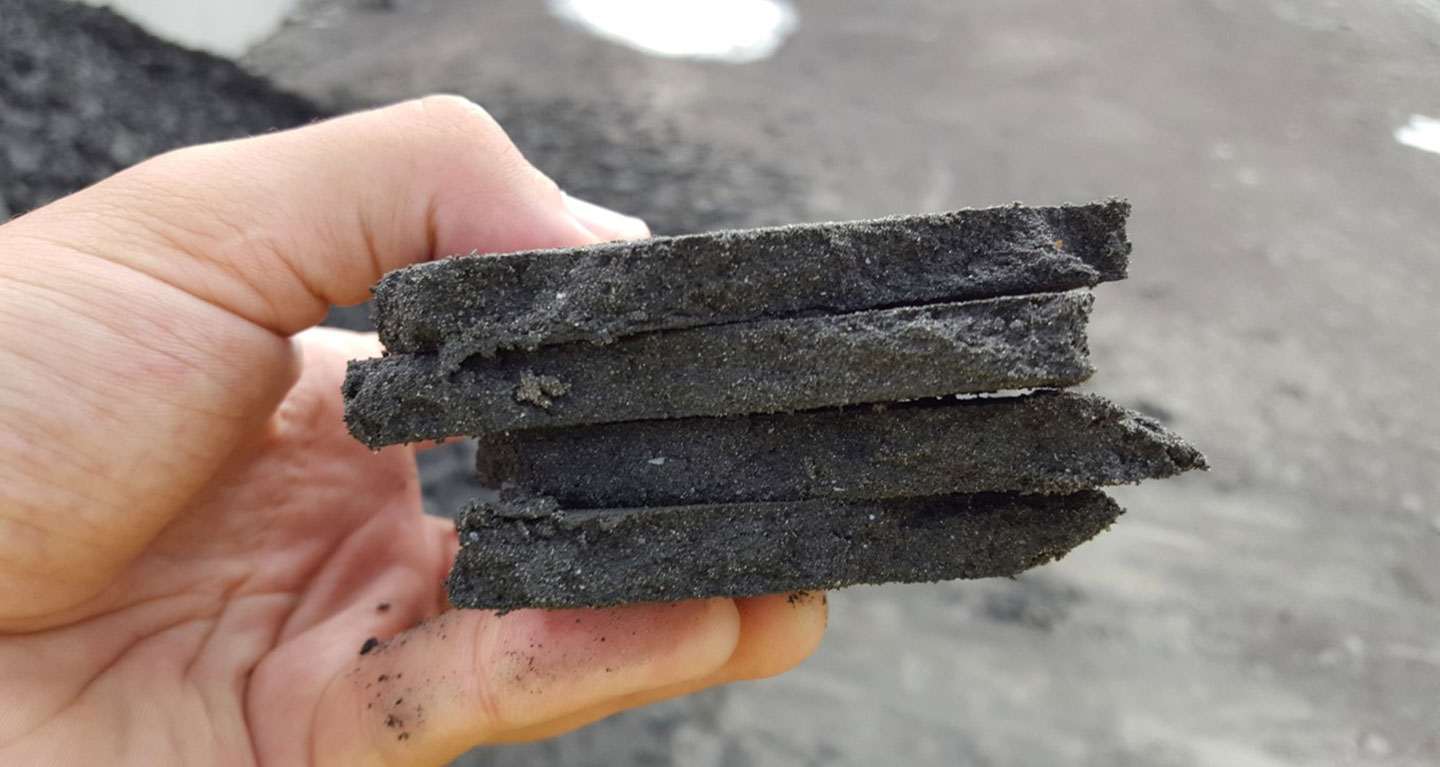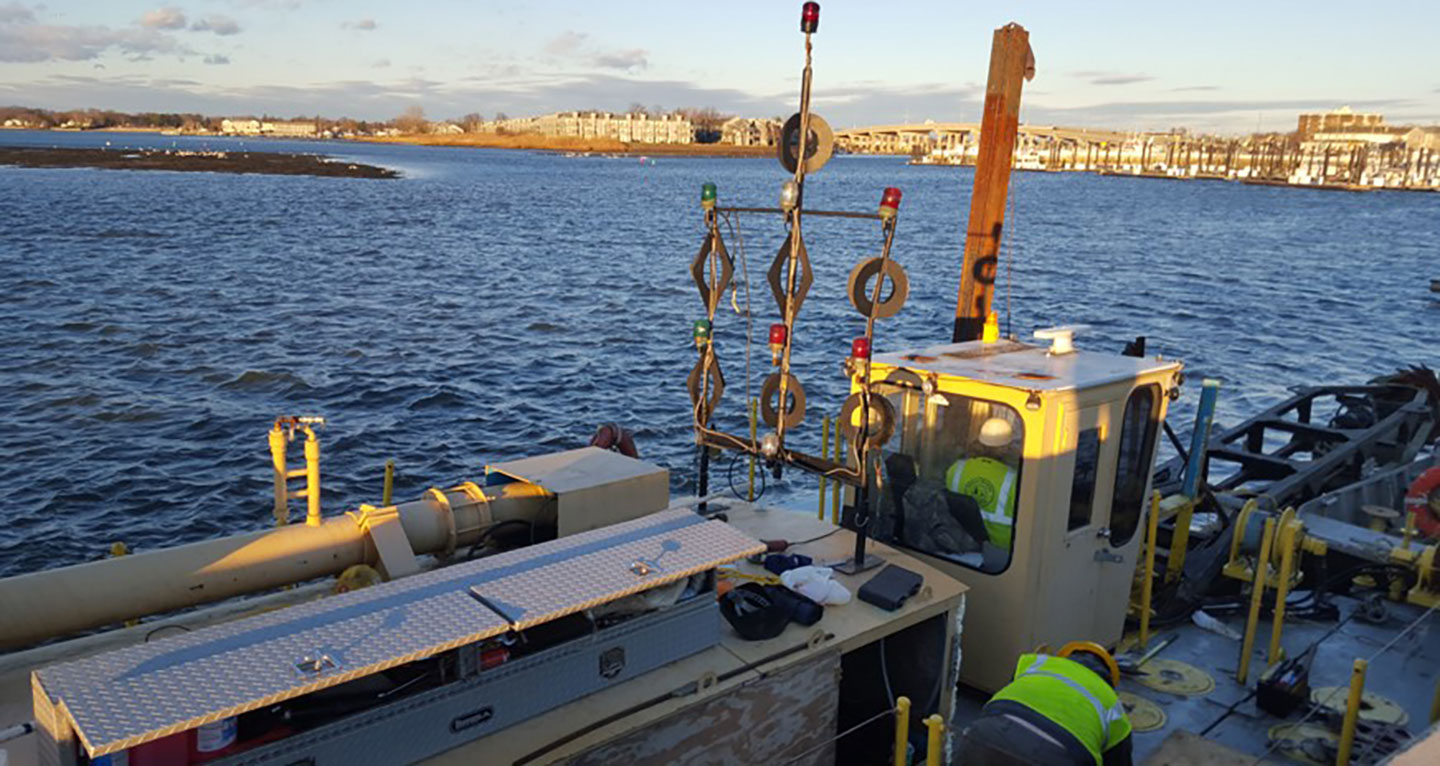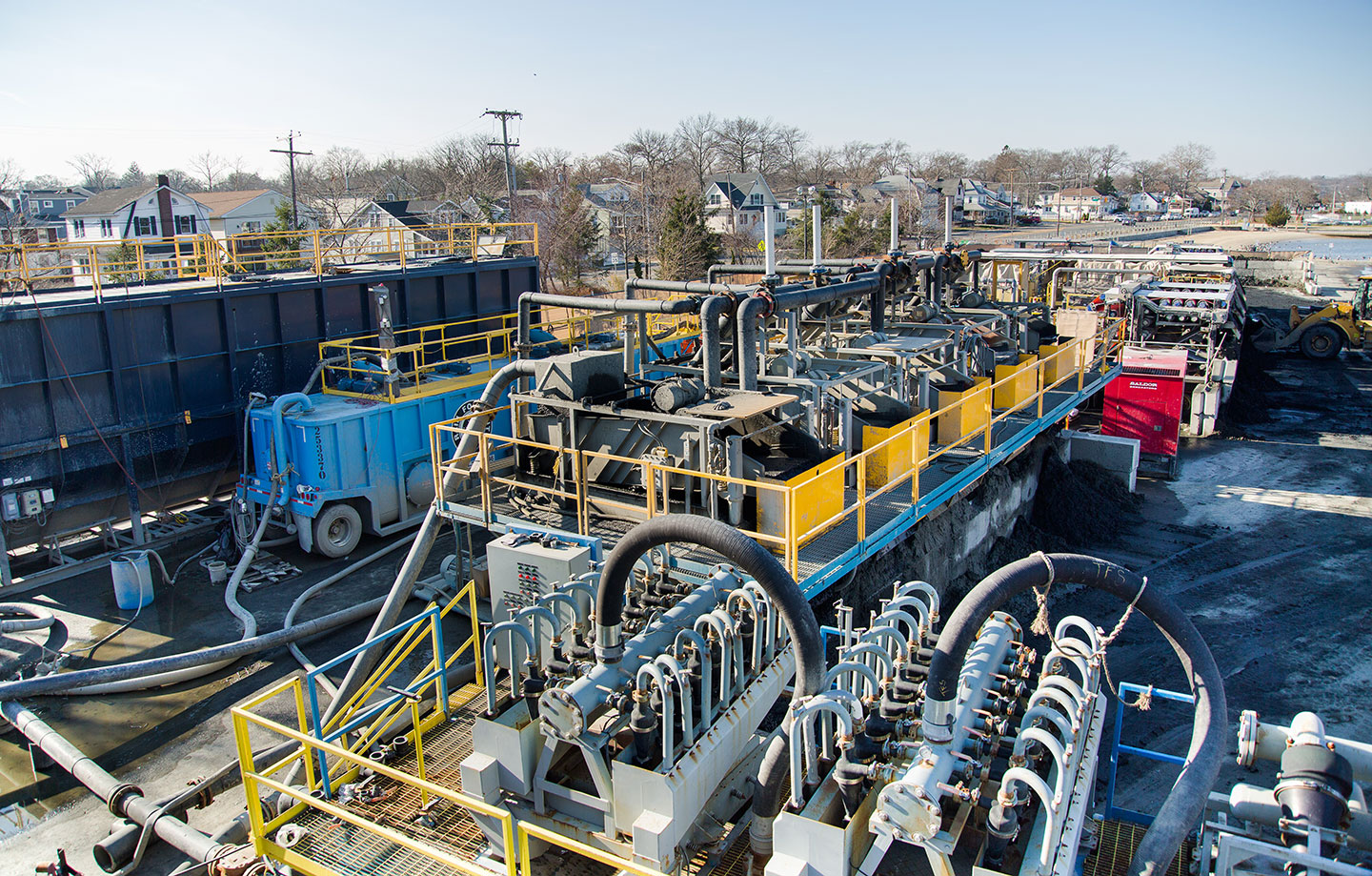Dredging our rivers and intracoastal waterways is a necessary practice to keep boating and shipping channels clear from sediment build up. Think of it in the same way we maintain our highways and roads – instead of filling potholes and cracks in
the pavement that result from high traffic usage over time, we are working for the Department of Transportation to dredge state maintained boat channels that have experienced shoaling from environmental factors like tides, currents, and severe weather
events.
Dredging Misconceptions
For most people, when they hear the term “dredging” they think of “dredge spoils,” or pollution or toxic materials that is dug up from the floor of the water bodies. Regarding our work in maintenance dredging, dredge material is
the same sand and silt that you touch when you go to dip your feet in the water that is naturally being moved around due to tides and weather events. In other words, dredge material is nothing more than the existing water bodies’ sediment that
is naturally found in a given area that is removed through the process of dredging. The usual dark color of dredged material is simply a result of its lack of exposure to the sun, oxygen, and its mix with thick naturally occurring silt and organics.
 View of the silt separated during the mechanical dewatering process. This material was dewatered using belt presses during the Shark River Project.
View of the silt separated during the mechanical dewatering process. This material was dewatered using belt presses during the Shark River Project.
In New Jersey, managing dredged material is not always a simple process due to the densely populated and developed shoreline. Since Superstorm Sandy, the increasingly numerous dredging projects in New Jersey have presented unique challenges. ”
Christopher Mullan
A Brief History of Dredging in New Jersey
New Jersey’s dredging of boat channels had been neglected for about 20 years beginning in the 1980s. Realizing the deterioration of our rivers and channels, the New Jersey Department of Transportation Office of Maritime Resources (NJDOT OMR) took
control of and were beginning to revive the dredging program when the impacts of Superstorm Sandy expedited the priority of dredging projects. Superstorm Sandy had worsened the already poor conditions of the majority of the approximately 220 state-maintained
boat channels. The storm spurred increased government funding, including the involvement of the Federal Emergency Management Agency to fund projects affected by weather events and natural disasters. Due to the high demand following Superstorm Sandy
and the subsequent Winter Storm Jonas, NJDOT then established criteria to decide which channels should be prioritized first. The criteria is generally based on attending to the channels that are in the worst shape first, but it also considers economic
factors, such as commercial fishing fleets or volume of recreational boating activity in the channel. All channels vary in width and length as do the vessels that are using those channels. Some channels are more of an economic priority for the transportation
of goods and take precedent over channels that are used for private boating or don’t have a high traffic through point.
The Win-Win Solution of Beneficial Use
In New Jersey, managing dredged material is not always a simple process due to the densely populated and developed shoreline. Since Superstorm Sandy, the increasingly numerous dredging projects in New Jersey have presented unique challenges.
- Due to the stringent environmental restrictions, we need to work within a very short time frame.
- We need to be mindful to not disturb the many waterfront properties that line New Jersey’s channels.
- We need to be creative and use a variety of technologies to figure out how to dewater dredge material and ultimately find a place for the dewatered dredge material to go.
In the past, regulations related to dredge material and dredging operations were more lenient than they are today, and there was a larger availability of suitable confined disposal facilities (CDFs). In New Jersey, due to the highly developed waterfront
properties, finding suitable and available CDFs with dewatering capabilities is very challenging. One of the solutions we have found is by taking soil samples of the material, and if the composition is over 95% sand, it can be pumped onto local beaches
for beach replenishment. Municipalities spend an enormous amount of funds replacing displaced sand that is washed away from the shore, so the solution is a win-win for us, the client, the municipality, and the local community. Similarly, we are also
working to use the material to fill in wetlands for marsh replenishment to counteract the erosion of marsh lands and create submerged aquatic vegetation and bird nesting habitats. Another unique solution is to dewater (dry out) the material and then
truck it to landfills to be used as daily landfill cover. Again, this is a win-win because the landfill takes the material in free of charge, and it saves them from the costly expense of buying material to cover the waste.
 View of the dredge used during the Shark River Project.
View of the dredge used during the Shark River Project.
Clearing Paths One Channel at a Time
Our firm’s role in dredging projects varies from project to project, but we are typically involved at every level of the project including, but not limited to, engineering design, environmental and historic preservation, FEMA reimbursement, and
construction inspection services, where I am most thoroughly involved. Additionally, our firm provides environmental and historic preservation services where we identify and plan around obstacles like registered shipwrecks. We also help plan the project
around environmental restrictions, which can limit the allotted time frame for projects significantly. Environmental factors like bird nesting on beaches or the spawning season of endangered fish species require a lot of careful planning and attention
to environmental policy. Our team can also help expedite FEMA’s project reimbursement, which applies when the dredging is necessary due to the results of extreme weather or other naturally occurring events.
 View of the mechanical dewatering plant utilized during the Shark River Project.
View of the mechanical dewatering plant utilized during the Shark River Project.
One unique example of our dredging work that I had the opportunity to work on is the Shark River Channel and Spur Dredging project in Neptune, New Jersey. To overcome the challenge of dredging and dewatering the material with limited space to
work, we utilized both active and passive dewatering techniques in close proximity to residences. By familiarizing ourselves with the dewatering equipment and carefully planning each phase of the project, we were able to overcome the challenges associated
with working in a small footprint and during a short dredging season while remaining cost effective and giving back to the local communities through the beneficial use of the dredge material.
To find out more about the Shark River Channel and Spur dredging project, check out this journal paper I coauthored with my colleagues James Heeren and Scott Minnich for the Western Dredging Association (WEDA).